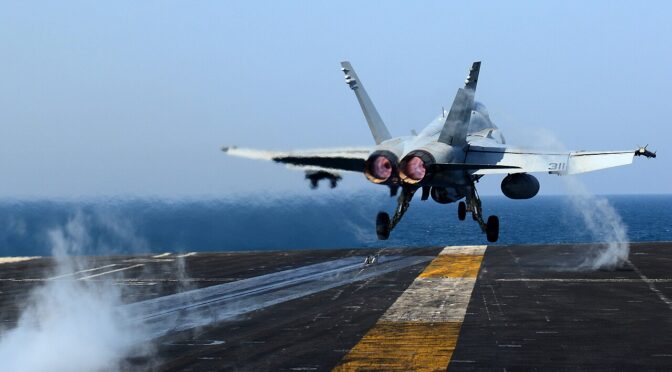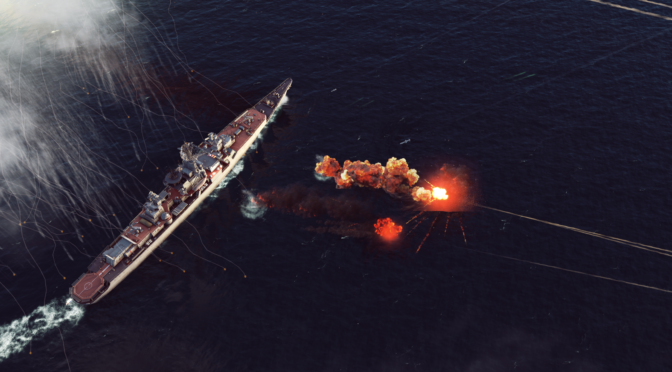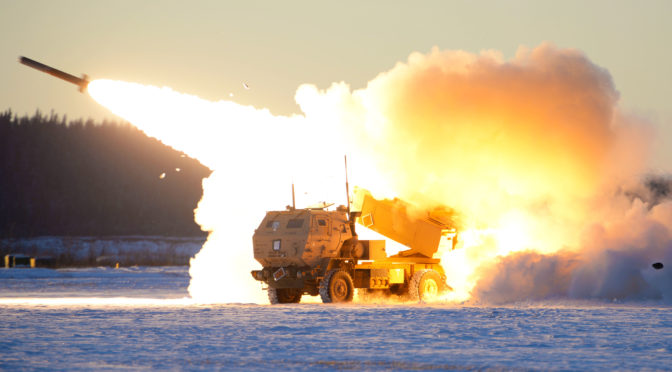By BJ Armstrong and Marcus Jones
“If my career were ahead instead of behind me, I should endeavor to the extent of my ability, and at the earliest opportunity, to acquire as thorough a knowledge of the principles of the art of war as possible, and should neglect no opportunity to train myself in their application by playing competitive war games.” –Admiral William Sims, 1921
With enemy destroyers approaching from the southern end of the Philippine archipelago, the commander faced a critical decision: Should he launch a risky strike with his dwindling VLS weapon supply, or chart a course eastward to evade and regroup in the vast Pacific for a future battle?
This scenario was the challenge for a Midshipman Fourth Class, serving as the commander of American forces in a recent wargame hosted by the Naval Academy Wargaming Society in collaboration with Bancroft Hall’s training program. Facilitated by CDR Ken Maroon, PhD, these combat scenarios in and around the contemporary South China Sea have become a staple of Saturday mornings in the Wargaming Lab beneath Mahan Hall. Acting as part of a makeshift Maritime Operations Center, Naval Academy Plebes in this scenario not only reinforced their professional knowledge of American naval forces, but also grappled with the complexities of naval decision-making and critical thinking in a dynamic, high-pressure environment.
Phil Pournelle’s recent article “Does it Matter if You Call It a Wargame? Actually, Yes,” calls on CIMSEC readers and the larger military and national security community to consider the taxonomy of how we think about the events that are commonly called “wargames.” He offers vital distinctions and a way to think about the teleology of exercises that often fall into a rather large kitchen sink. However, there is an important element of the wargaming enterprise which is overlooked, when the focus is only on analysis and the operations research outcomes that good wargames can provide, but not their education value.
Educational wargaming is not merely an exercise in concept development in the upper reaches of command. It is a crucible for forging the decision-making skills, adaptability, and intellectual overmatch required for contemporary naval challenges in the earliest stages of a young officer’s development. Wargaming, particularly at the pre-commissioning level, transforms the learning experience by engaging participants in narrative-rich, synthetic environments that mimic the pressures of real-world decision-making. Drawing on historical precedents and recent innovations, we see a central role of wargaming in cultivating the next generation of naval leaders at the U.S. Naval Academy.
More Than Concept Development and Analysis
Since the 19th century, wargaming has been an invaluable educational tool for the U.S. military. Early efforts, including Kriegspiele at U.S. Army schools after the Civil War, were followed by Lieutenant McCarty Little’s development of a wargaming curriculum in the early years of the U.S. Naval War College. Later, the interwar games conducted there shaped the strategies and tactics for victory in the Pacific during World War II and were transformative not only because they tested operational concepts but because they prepared commanders for the cognitive and emotional challenges of command. This historical precedent underscores the enduring value of wargaming in creating synthetic experiences that sharpen the mind for future crises.
In the 21st century as they did then, these efforts offer a low-cost, low-risk environment for naval professionals to test tactics, strategies, and operational concepts, shape their knowledge of past and contemporary military scenarios, and condition their decisions within them. At USNA, a host of recent initiatives have laid the keel of our midshipmen’s knowledge of the maritime world and established their understanding of the core concepts of American seapower.
The Naval Academy is doubling down on the educational value of wargames through Saturday morning battalion training sessions, the activities of the student-led Wargaming Society club, wargame scenarios in history department classrooms, and the incorporation of wargame modules into the new Maritime Warfare (NS300) course taught by the Professional Development Department.
The resurgence of wargaming in military education over the past decade underscores its value in achieving an intellectual overmatch against today’s potential adversaries. In 2015, then Secretary of the Navy Ray Mabus described wargaming as invaluable for testing new ideas in a low-risk environment. Former Marine Corps Commandant General David H. Berger later emphasized that wargaming is essential for practicing decision-making against a thinking enemy, while then-Air Force Chief of Staff General Charles Q. Brown highlighted the role of wargaming in adapting continually to a shifting global strategic landscape. Despite this, current military education often delays wargaming exposure until mid-career, resulting in missed opportunities for developing decision agility and professional competency from the outset of a naval professional’s development.
Introducing wargaming at the pre-commissioning level lays the groundwork to address the Department of the Navy’s admitted deficiency in wargaming literacy at the operational and strategic levels of war. By introducing the practice of wargaming as early as possible in an officer’s development, we cultivate a mindset that embraces complex, multi-layered, competitive decision-making and innovative thinking about enduring military problems and concepts. Early exposure also mitigates later-career reliance on professional civilian wargamers and facilitates the operational integration of wargaming principles into military organizations. This in turn enhances the role and value of wargaming later in officers’ careers.
Laying the keel with early wargaming experiences embeds key cognitive attributes in young officers, preparing them to think deeply and creatively about history and its relation to contemporary warfare. The initiatives at USNA introduce midshipmen to the complexities of naval decision-making early in their careers, fostering the critical thinking and adaptability essential for future operational challenges. By embedding these skills at the pre-commissioning level, USNA prepares its graduates to contribute meaningfully to advanced wargaming processes later in their careers.
Wargaming as Interdisciplinary Thinking and Applied History
The educational program at USNA is admirably multidisciplinary, with particular focus on the study of science, technology, engineering, and math (STEM). Integrating wargaming into this educational framework puts specific aspects of STEM education into context, demonstrating how these disciplines contribute to the multi-domain operations of today’s Joint Force. For example, understanding hypersonic technology’s impact on military operations or how cyber capabilities enable traditional land, sea, and air operations provides a deeper and broader understanding of modern warfare. Additionally, wargaming offers invaluable practical applications for the disciplines of math and economics by highlighting the central role of risk and probability in the adjudication at the heart of wargame processes, allowing midshipmen to apply theoretical concepts to real-world strategic and tactical scenarios.
Done well, educational wargaming serves as a form of applied history, offering midshipmen a unique way to engage with historical events, processes, causation, and outcomes. By building and working through historical scenarios, students develop a deeper understanding of the complexity and contingency of historical decision-making, amplifying their growth as leaders at every level. Midshipmen learn to ask the hard questions and wrestle with complex answers in ways that apply both to thinking about the past and reasoning through the operational and strategic challenges of the present.
Critical thinking and decision-making skills are, of course, buzzwords of the moment in higher education generally and officer development especially. More than just asking hard questions, however, thinking critically involves being willing to explore disruptive and alternative ideas. The process of designing, playing, and analyzing wargames requires students to think strategically, anticipate opponents’ moves, and make quick, informed decisions under pressure. These skills are directly transferable to real-world military and civilian leadership roles, where effective decision-making can have significant consequences. Of course, poorly designed scenarios can reinforce false assumptions or oversimplify complex realities, leading to flawed conclusions. As Peter Perla warns, the danger lies in creating narratives that are emotionally compelling but factually misleading.
To maximize their educational value, wargames must strike a careful balance between realism and abstraction, ensuring that participants grapple with the uncertainty and complexity of real-world operations without succumbing to simplistic or sanitized portrayals. Moving forward, wargaming activities at the Naval Academy must remain engaged with the Fleet’s contemporary posture and challenges, lest the practice of wargaming become abstract and fall into irrelevance.
Charting a Course on the Severn
Wargaming has a long history on the banks of the Severn River, though perhaps not as long as in Narragansett Bay. In the 1930s and 1960s, Naval Academy professors developed wargames for class use to enhance historical and contemporary understanding. In the 1980s and 1990s, the Academy relied on computer-based Navy Tactical Game (NAVTAG) to provide valuable opportunities for professional development and competition between companies and classes. The NAVTAG provided both educational and training simulation opportunities to the Brigade, but was sunset because of lack of financial and technical resources with the end of the Cold War.
In 2020, the Naval Academy Museum and History Department launched a wargaming initiative which created two main lines of effort. For a few years the History Department offered an experimental historical wargaming class, where midshipmen intensively studied an historical scenario and developed a wargame based on it. Concurrently, the Combat Action Lab was established, an Extra-Curricular Activity (ECA) today called The Wargaming Society, for Midshipmen to engage with the practice in an informal, midshipman-led setting. These efforts have developed over four years to include professional development events on Saturday mornings and the introduction of contemporary wargaming problems as the crowning experience in the new Maritime Warfare course. Efforts to bring these and other multidisciplinary lines of effort together, with the necessary resourcing and organizational structure, offer much promise for a robust future wargaming enterprise at USNA.
When today’s naval professionals and veterans think of wargaming, they often map it to operations research analysis, Pentagon decision-making, and mid-to-senior career development. There is great value in the analytical games, as described by CDR Anthony LaVopa in his recent article “Building Warfighting Competence: The Halsey Alpha Wargaming Experience,” and in their staff and war college level use. But, wargames are ‘story-living experiences’ that transcend traditional methods of teaching and analysis at all levels of seniority and experience including at the precommissiong level. By immersing participants in synthetic environments where decisions have tangible consequences, they provide a powerful means of cultivating the intellectual and emotional resilience essential for leadership in today’s demanding operational environments. As the U.S. Naval Academy continues to expand its wargaming initiatives, it is laying the keel for a generation of officers prepared to confront the uncertainties of a rapidly changing strategic landscape.
Captain Benjamin “BJ” Armstrong, PhD is an Associate Professor of War Studies and Naval History and the U.S. Naval Academy.
Dr. Marcus Jones is an associate professor of history at the U.S. Naval Academy.
The thoughts and opinions expressed by the authors of this article are offered in their personal and academic capacities and do not necessarily reflect the official policies of the U.S. Navy or any government agency.
Featured Image: U.S. 5TH FLEET AREA OF RESPONSIBILITY (Jan. 1, 2013) An F/A-18C Hornet of the Warhawks of Strike Fighter Squadron (VFA) 97 launches from the aircraft carrier USS John C. Stennis (CVN 74). (U.S. Navy photo by Mass Communication Specialist 2nd Class Kenneth Abbate/Released)




